Kraków 2022-03-10
Railway station Krakow Podgórze.
History.
The Kraków Podgórze railway station was built during the launch of the Galician Transversal Network, i.e. in 1884. At that time, the city of Podgórze did not have its own station. Travelers from the city of Podgórze used the Podgórze station, now the Krakow Płaszów station. Due to the distance to the station, horse-drawn carriage drivers had a golden age. Therefore, the city authorities of Podgórze decided to build a railway station closer to the city. The authorities in Vienna have been asked for permission to build a new station. The authorities in Vienna allowed the construction of the station, but did not give the money. The city has announced a donation collection. The money was raised for the construction of a small wooden station with only one small waiting room. The border between Krzemionki and Zabłocie was a good place for the construction of the station. The station was opened in 1885.
It quickly turned out that the building was too small. The authorities in Vienna were again approached. This time, the authorities in Vienna gave the materials to be built, although they did not give any money. A new station was built in the Galician (Austrian) style. The station still exists today, although now it serves residential purposes.
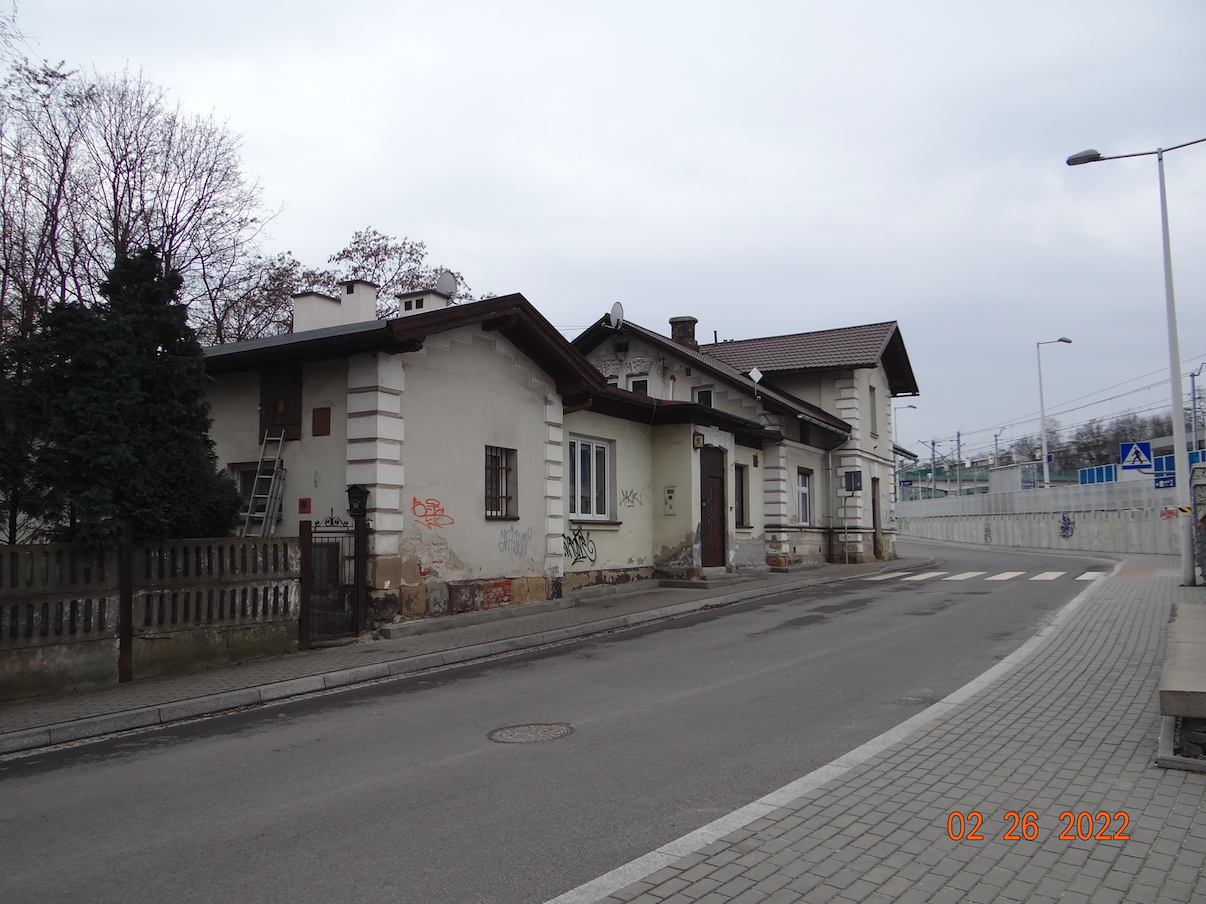
Description of the photo: Kraków Podgórze station building, built around 1890. The railway track ran on the other side of the building, and on this side there was a square in front of the station. Now the railroad tracks run on the other side as you can see the electric traction. And one more thing. Graffiti on the walls is common vandalism.
The station was renamed Podgórze, and the former Podgórze station became the current Kraków Płaszów station. The first name of the station was Podgórze Miasto, then Kraków Podgórze. During the German occupation, the station was called Krakau Podgorze. After the war, the Polish name returned. In 1995, the station was renamed Kraków Krzemionki, and on December 9, 2017, the historical name of Kraków Podgórze was returned.
The main route from the Kraków Płaszów station to Skawina and further towards Oświęcim and Sucha Beskidzka (formerly Sucha) runs through the Podgórze station. In 1945, the trail was No. 104, and in 1988, No. 135. Currently, the trail is No. 94.
The first change on the single-track line between the Kraków Bonarka station and the Kraków Płaszów station was the correction of the route. Initially, from the Podgórze station area, the tracks ran in the gorge with three arches and a wooden viaduct over the present Wielicka Street. The track ran from the south side of the station building, not from the north as it is today. The station building was then placed parallel to the track. Due to the slope of the terrain, this section is a typical mountain section, therefore the tracks have been lengthened by the use of curves and the reverse slope has been used. This type of track makes it easier to brake the train when going downhill or lengthen the ramp in the opposite direction. Currently (2022) trees grow in this sanctuary. Lanckorońska Street and Aleja Pod Kopcem run parallel to the old track. Plac Przystanek Street was actually the square in front of the station.

Description of the photo: In the lower right corner, the Kraków Płaszów station. The dark curving line is the existing track. A clear broad line is the construction of an embankment for a new trail. You can locate the following streets: Wielicka, Limanowskiego, Lwowska and the tracks to the Kraków Główny station.
The aforementioned correction of the trail was started in 1943, during the German occupation. The Germans carried out the expansion and modernization of railway lines in Krakow due to the attack on their Russian brothers. The change consisted in the fact that a new railway line was marked out, which was led along a new long curve and on an embankment, to the Kraków Płaszów station. A two-track route was planned. The commenced works were completed after the war.
In the 1960s, the track system between the Kraków Bonarka station and the Kraków Płaszów station was modernized again. Two double-track routes were built. The first route to the Kraków Płaszów station was left. The second is the route, parallel to the Kraków Prokocim Towarowy station, bypassing the tracks at the passenger platforms.
This first route, No. 94 Kraków Płaszów - Oświęcim, is currently double-track, electrified and has a length of 64.50 km.
The latter route was designated No. 603 Kraków Prokocim Towarowy - Kraków Bonarka. The trail is 7.36 km long. From the very beginning, the trail was two-track and electrified.
For many decades, passenger traffic at the Kraków Podgórze station (passenger stop) was high. It was used mainly by employees of plants in Nowa Huta: a steelworks, heat and power plant, tobacco plants, meat plants, prefabricates and many others, who changed here from trains to MPK bus transport. They were the inhabitants of Skawina and the surrounding area.
The new Kraków Podgórze station.
The new Kraków Podgórze station, compared to the old station, has been moved closer to the intersection of Wielicka, Bolesława Limanowskiego, Powstańców Wielkopolskich and Aleja Powstańców Ślaskich and the Podgórze SKA bus terminus. The newest of these streets is Aleja Powstańców Ślaskich, which was put into use in 1979 as a dual carriageway with three lanes each. Since then, the intersection has been modernized several times, including the construction of the Obroncow Lwów Overpass. At the same time, several pedestrian tunnels were built in the embankments of the railway routes. Railway viaducts were also rebuilt to widen the streets underneath them.
The following trains pass here: Zakopane, Bielsko Biała, Skawina, Wadowice, Kraków Główny, Kraków Płaszów. There are about 30 connections a day at the station. In 2018, the station served up to 60 passengers per day. In 2023, when all renovation and modernization works on the E 30 route (route No. 91) are completed, the traffic will increase. It is expected that the station will serve 70 trains a day.
The Kraków Płaszów station is a transfer node for the MPK public transport: buses No. 143, 174, 178, 274, 301, 578, trams No. 2, 6, 13, 24.
The Kraków Podgórze station has two platforms. Platform 1 has two edges and serves trains on the slip road, route No. 624, on the section Kraków Zabłocie - Kraków Bonarka. Half of Platform 1 is placed on the pillars and the rest on the embankment. Platform 2 has one edge at which the trains on the Kraków Płaszów - Kraków Bonarka route stop. There are stairs, two elevators and an escalator at the travelers' disposal. The stop is adapted to serve people with reduced mobility. The platforms have lighting, meadows, resting places, litter bins, display cabinets for railway information, and a sound system. The surface of the platforms is non-slip. Railway traffic at the Kraków Podgórze station is controlled from the Kraków Płaszów control room and the Kraków Bonarka support control room. New SRK systems and devices were installed.
The Kraków Podgórze station, after renovation, was put into use on December 9, 2017, along with new railway flyovers. We wrote about railway flyovers in a separate article.
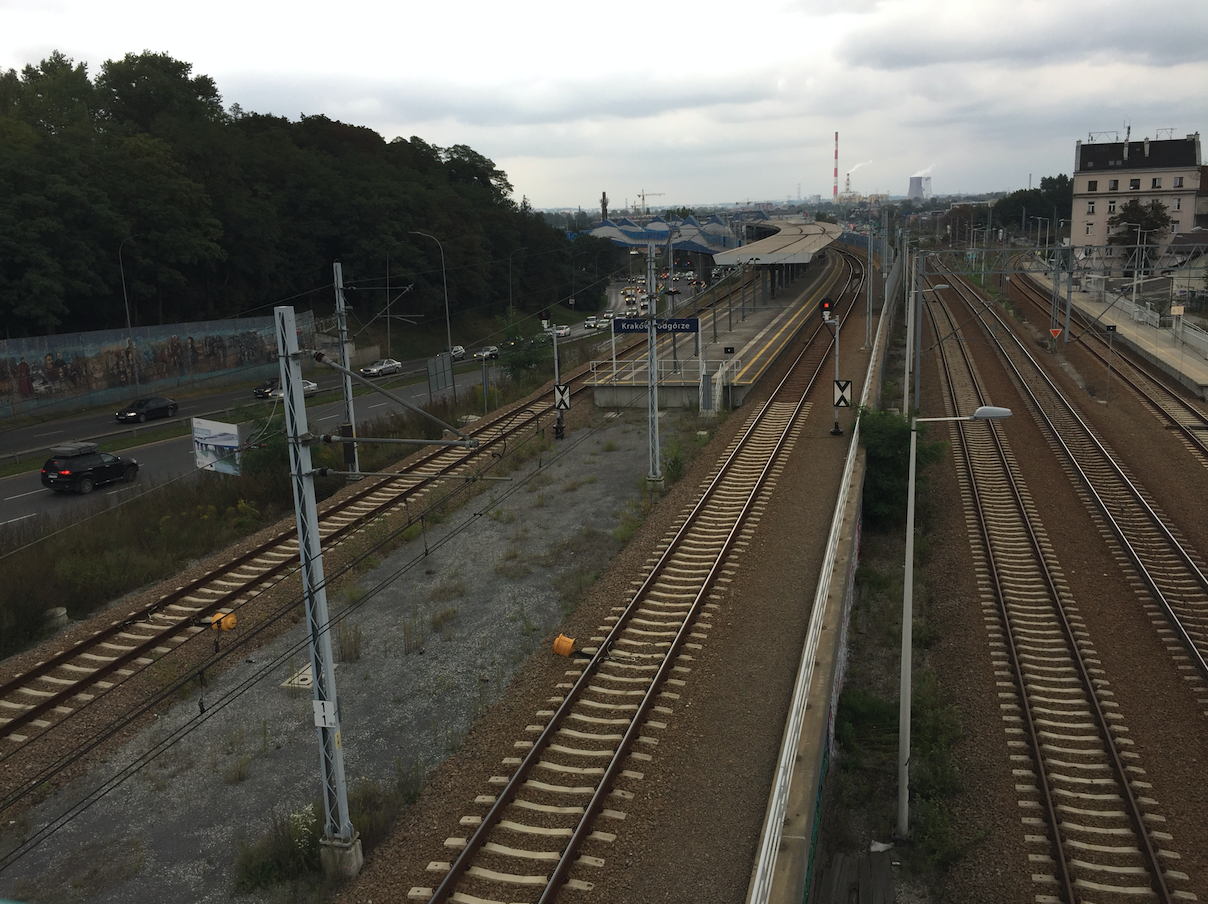
Description of the photo: Platform 1 is visible in the center and two tracks of the line No. 624. Two more tracks are the line No. 603 Kraków Prokocim Towarowy - Kraków Bonarka. The track on the right at Platform 2 is the line No. 94 Kraków Płaszów - Oświęcim. The Kraków Łęg Combined Heat and Power Plant is visible on the horizon.
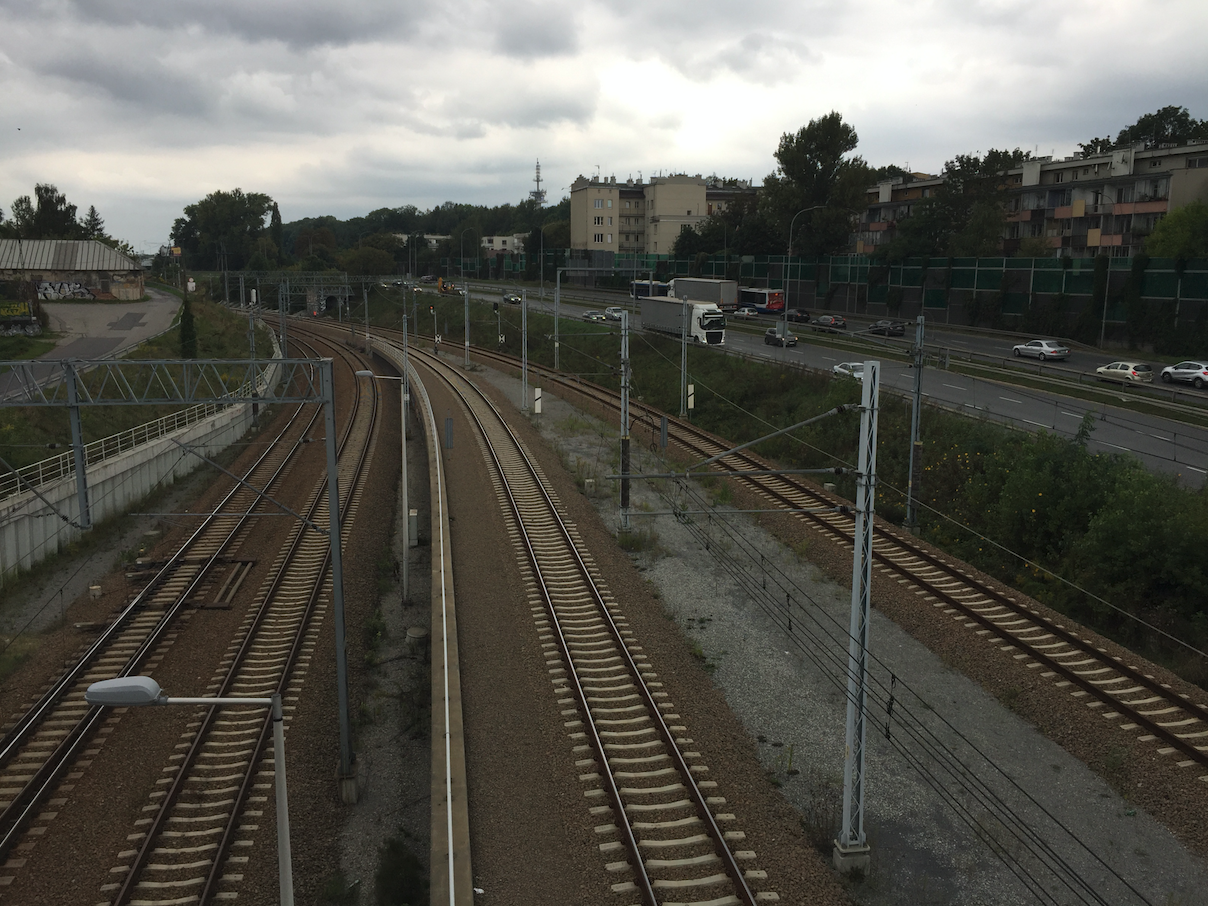
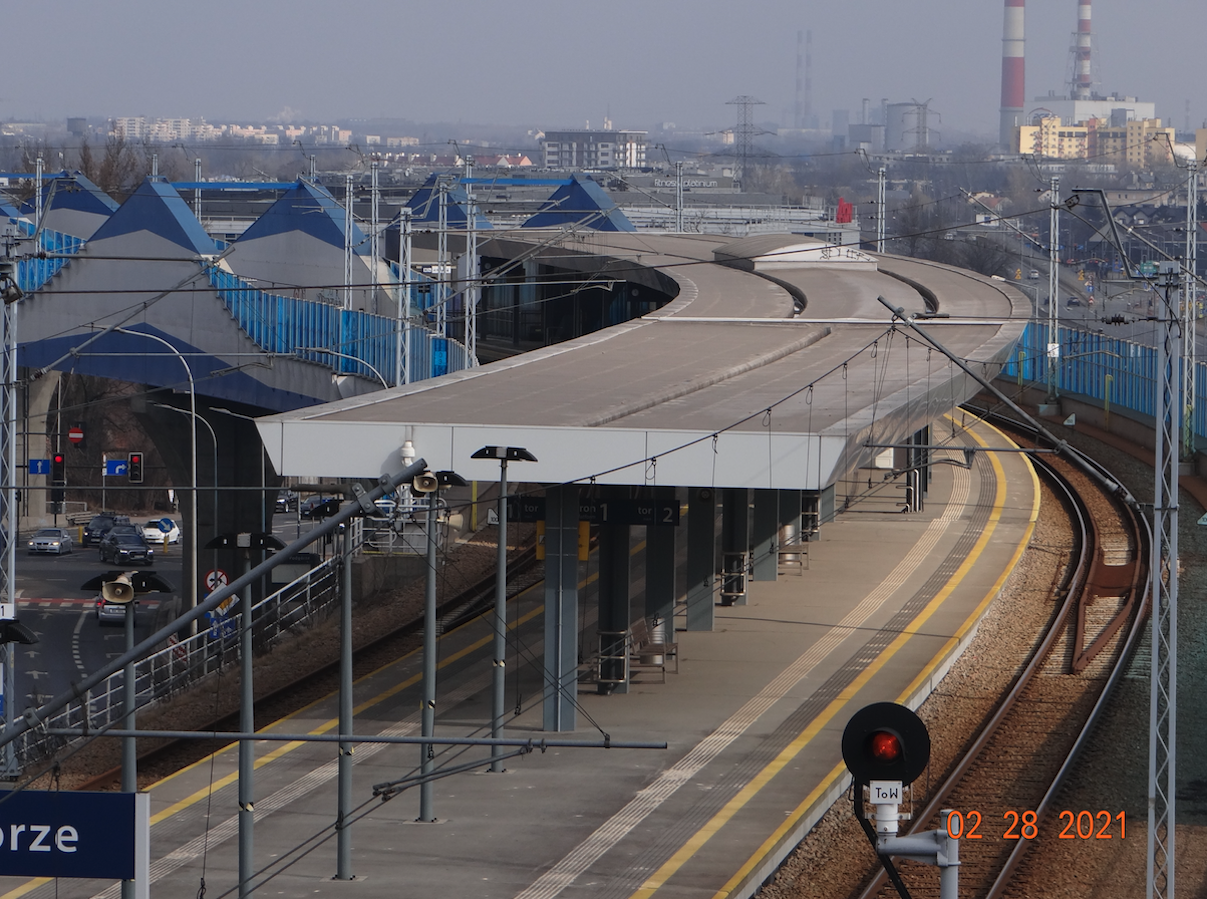
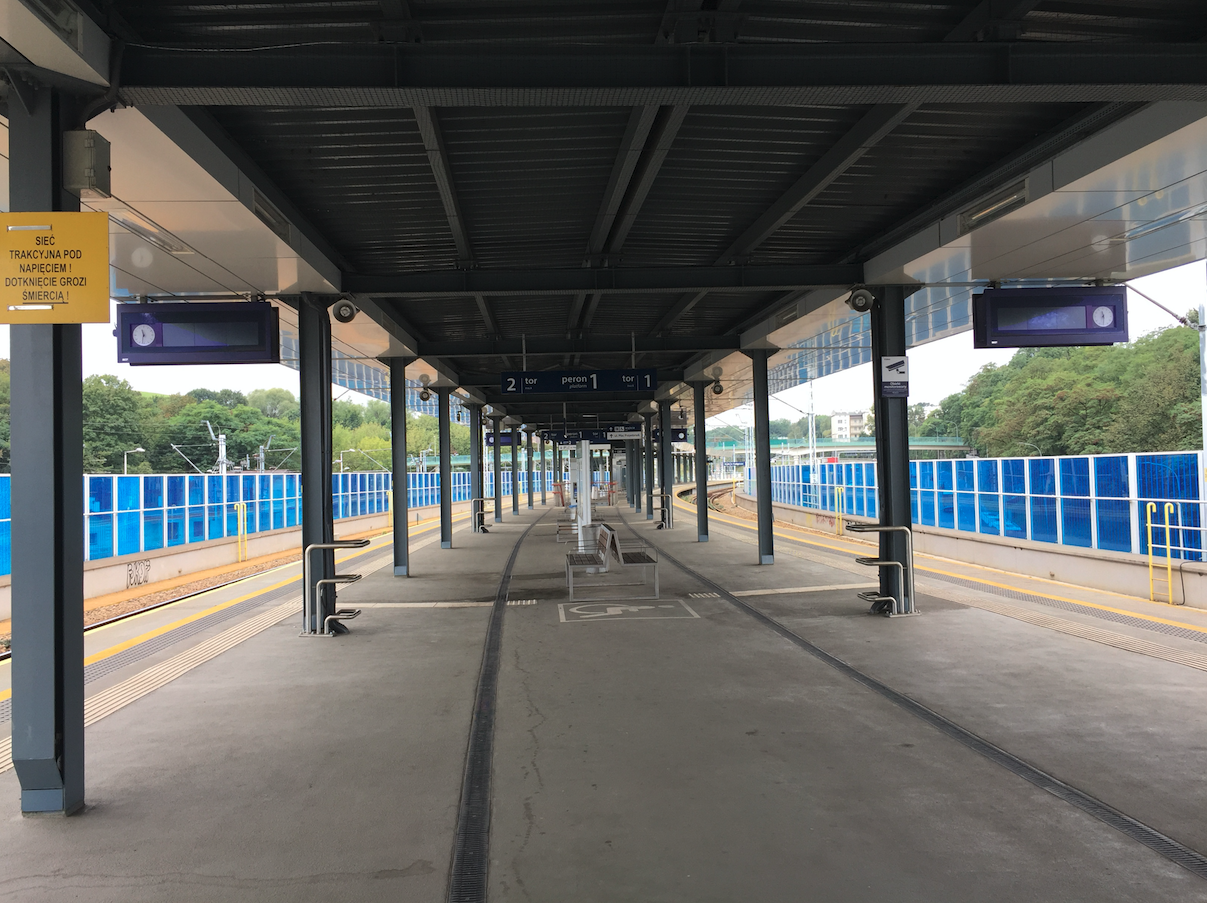
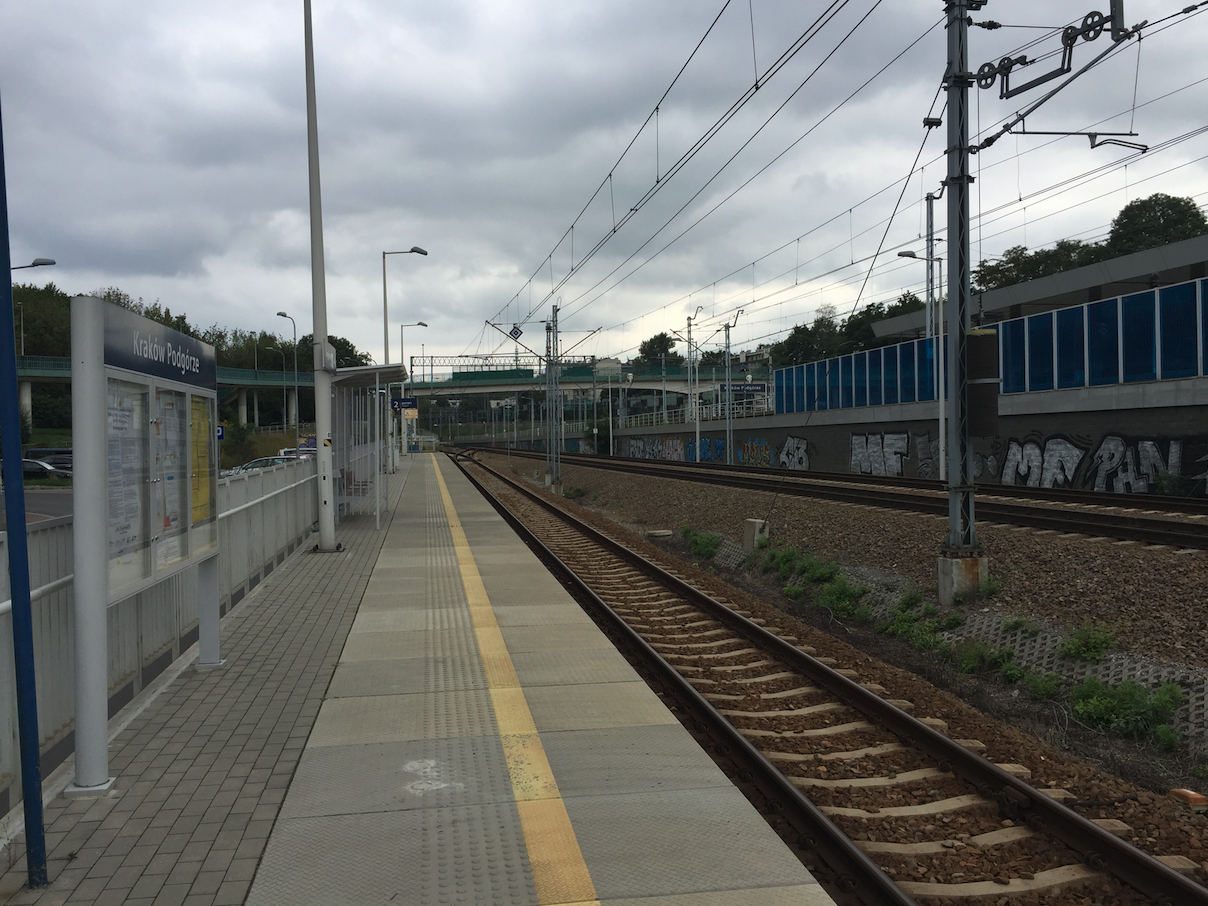
Written by Karol Placha Hetman
